A Quick Guide to Recognizing Linear,Quadratic,and Exponential Functions
A Quick Guide to Recognizing Linear, Quadratic, and Exponential Functions
1. Tables
Important Note: The Input Values MUST be equally spaced
| Linear Function | Quadratic Function | Exponential Function |
| Output difference is constant |
First difference is linear Second difference is constant |
Output ratios are constant |
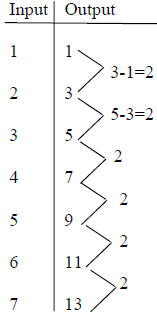 |
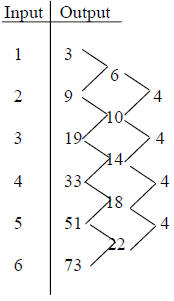 |
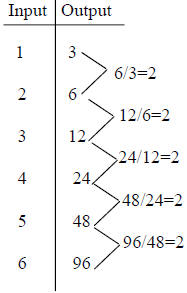 |
Important note: There are many different forms of both the
explicit and recursive equations for
the same function.
Linear: Terms are constants or constant times a
variable. Examples: y = mx + b ,
2· (H
-1) = T , y - 3 = 7x + 8, and Output = 2 x Input -1.
Quadratic: Terms include constant times the square
of the input variable and can also include
linear terms as above. Examples: Area = (side)2, y = ax2 + bx + c , and

Exponential: A constant times a base raised to a
variable exponent. Examples: y = 2x ,
K = 3·2P
, Balance = 1000 x (1.005)months.
Copyright 2005, Debra K. Borkovitz. You may copy or
edit this material for non-profit,
educational use only.
To Commentary Doc File PDF
File
Home
3. Recursive Equations
Linear: Initial Row = ____ (fill in blank with a number); Next Row =
Previous Row + ___
(fill in blank with a number )
Example: In the first table, the initial output value is
1, and we add 2 to get the next value.
More formally: f (1) =1, f (n +1) = f (n) + 2
Quadratic: Initial Row = ____ (fill in blank with a
number); Next Row = Previous Row + ___
(fill in blank with a linear function )
Example: In the second table on the other page, the output
value in the initial row is 3, and we
add 4 x (Input) +2 to get the next value. More formally: f (1) = 3, f (n +1) = f
(n) + 4n + 2
Exponential: Initial Row = ____ (fill in blank with
a number); Next Row = Previous Row x ___
(fill in blank with a number )
Example: In the third table on the other page, the output
value in the initial row is 3, and we
multiply by 2 to get the next value. More formally: f (1) = 3, f (n +1) = 2·
f (n) .
4. Graphs
Note 1: You cannot tell for sure whether a function is
quadratic or exponential just from
the graph. There are other functions whose graphs look like quadratics and
exponentials.
Note 2: Be careful if the domain (possible input values)
is restricted. For example, in many
physical problems, it makes no sense to include negative inputs , but this
restriction takes away
some of the information that might help you identify the shape of the graph.
Linear: A straight line
Quadratic: A parabola. Has a maximum or a minimum,
and is symmetric about a vertical axis.
Often looks “U Shaped,” but can be deceptive; for example, if small portions are
magnified they
can look like straight lines.
Examples on next page
Exponential: Either grows or decays at a rate
proportional to the function, so eventually either
starts growing very quickly or shrinking to zero very quickly.
Examples on next page
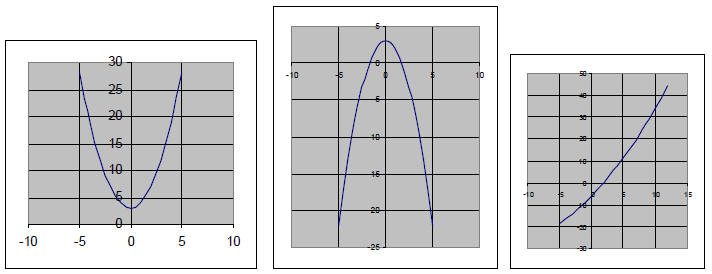

Examples of Quadratic Functions
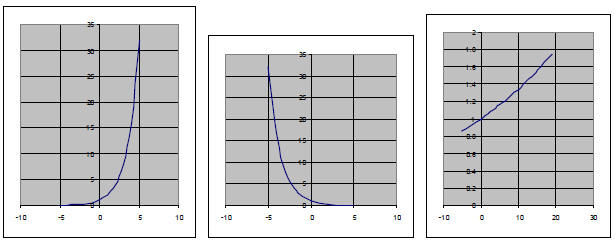
Examples of Exponential Functions (note the last one
hasn’t “taken off” yet; note similarities with
the third quadratic function).
Copyright 2005, Debra K. Borkovitz. You may copy or
edit this material for non-profit,
educational use only.
| Prev | Next |